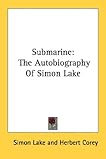Few ships actually started out being designed as a privateer or pirate ship. Pirates being opportunistic sort of folks usually mutinied and stole a ship from its owners. Readers of Robert Louis Stevenson's Treasure Island are well-acquainted with the mutiny orchestrated by the affable cook, one Long John Silver. They may not be familiar with Robert Culliford or Jack Rackham who took their vessels from their own pirate captains.
Some pirates stole their ships from a harbor such as the fictional Jack Sparrow, or the real life pirate Jack Rackham did in Nassau, New Providence. Others like Bartholomew Roberts and Samuel Bellamy commonly captured them at sea.
One captain accused of piracy had his ship handed to him by investors anxious for prize money.
In the late 1690s, English investors sick of the pirate attacks in the Indian Ocean against British East India vessels commissioned the Adventure Galley. Crewed by 150 men, it weighed in at 284 tons and had 34 cannons. In addition to sails, as a galley she was equipped with long oars called sweeps. A vessel the size of the Adventure Galley would have a deck dedicated for rowing and there could have been about 21 sweeps to a side. Crew not needed for handling the vessel or manning its forward guns were used to row the ship toward its target.
Galleys, or 'gallys' as they were sometimes spelled, being shallow-draft vessels were designed to operate chiefly in coastal waters, though some could be used for crossing oceans. The earliest known large-scale attempt to cross the Atlantic Ocean by galleys occurred in the 14th Century by the Mali emperor Bata Manding Bory's ill-fated fleet that set out to discover the New World. More about that in a later post.
As warships, galleys could lurk unseen behind an island, a headland, or in a bay, waiting for the moment to intercept an unwary vessel. Long before steam power, they were the weapon of choice to attack a sailing ship that had been becalmed.
There were trade-offs with this design, the gun decks also had to be well above the waterline and there had to be some way of waterproofing the oar locks. When underway, sailing ships tilt, or heel, away from the wind, submerging part of the hull. During storms, all parts of the ship are battered and drenched by waves, wind-driven rain and salt spray. If unsealed gun ports or oar locks are under water long enough, a ship could fill with water and sink.
The galley has long been a fighting vessel, especially in the Mediterranean where the Greeks and Persians and later the Romans and Carthaginians fought decisive battles at sea. The Middle Ages saw the rise of Christian and Muslim fleets; galley battles figured in the Crusades and their aftermath. In the Atlantic, the Norsemen used their galleys for long-range pillaging and slave raids.
In the Mediterranean, independent Muslim city states in North Africa using their xebec-like galleys raided both shipping and the seacoasts of Christian nations first in the Mediterranean and then much later as far away as Iceland. The North Africans captured entire villages and sold the captives into slavery. Ironically, some of the captives were put back aboard the raiders as galley slaves.
The captain of the Adventure Galley was an experienced privateer and sometimes pirate with wealthy aristocratic connections. In fact it was rumored that King William III was a discrete investor. This is not so far-fetched an assertion, as the French King Louis XIV helped finance the successful 1697 raid on the Spanish New World port of Cartagena de Indias by Bernard Desjean, Baron de Pointis and Jean Baptiste du Casse with a flotilla of buccaneers and French soldiers.
The captain who started out with such glowing references either became an unlucky victim of diplomatic misfortune or really was the notorious pirate that so many claimed. The British authorities alleged that far from hunting down pirates, the captain and crew of the Adventure Galley went rogue in the Indian Ocean.
There the Adventure Galley unsuccessfully attacked a Mughal convoy under protection of a British East India Company ship and eventually captured a rich Armenian merchantman, whose English captain was sailing under French passes from the French East India Company. The principal investor of this merchantman was a close friend of the Grand Mughal, Mohiuddin Mohammed Aurangzeb Alamgir.
Off the coast of Madagascar, the Adventure Galley and the prize Armenian merchantman met up with Robert Culliford and his ship Mocha Frigate. Culliford and the captain of the Adventure Galley had unresolved business, because it was Culliford who had mutinied against him and taken his ship the Blessed William while he was ashore in Antigua.
In spite of his provocation, the captain of the Adventure Galley did not believe he had enough men to take Culliford's ship, so he stalled for time waiting for more of his vessels to arrive. The crew of the Adventure Galley, disgusted by their bad luck and their captain's apparent cowardice, joined Cullingford.
Ships of this time were not protected by from the ravages of the Teredo worm, also known as the shipworm. Not worms but really mollusks, these invertebrates grow rapidly in warmer seas, thereby accelerating a wooden ship's aging. The captain decided to burn the Adventure Galley, which by this time was thoroughly worm-eaten. He salvaged everything of worth and took the remainder of his loyal crew with his prize ship and struck out to make a deal with his former investors.
To placate the powerful and wealthy Mughal Empire, the British denounced the Adventure Galley's captain and crew as pirates. Some of their number were eventually captured and were persuaded to testify against the captain of the Adventure Galley. The investors who once flocked to him now either distanced themselves, or joined forces with the prosecution in order to protect their larger investments in the East India Company, which would be greatly damaged if it came under embargo by the Mughal Empire.
Protesting his innocence and unable to prove his assertions because evidence had been "mislaid," the captain of the Adventure Galley was found guilty and hanged at Execution Dock in London in the late spring of 1701. His body was then tarred, gibbeted, or placed in an iron cage, and hung at the mouth of the Thames River as a reminder to all seamen that piracy does not go unpunished. That grisly relic, which in life had once been Captain William Kidd, remained there performing this cautionary purpose for nearly 20 years.
Friday, March 5, 2010
Subscribe to:
Post Comments (Atom)














No comments:
Post a Comment